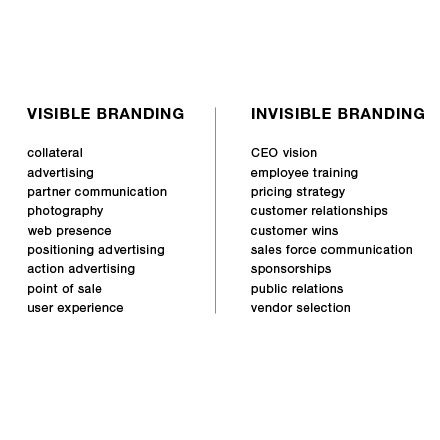Steal This Idea: Brand extension
The thorniest question in brand strategy is how to keep growing. At some point in the life of a successful brand, marketers will feel the pressure to extend its success by “leveraging” the brand into other offerings. Brand extensions can make a lot of sense, if the original brand has positive associations for customers.
The era of the stand-alone brand is coming to a close, as more and more companies understand the value of linking brands together. While brand portfolios can have valuable synergy, they face four dangers that single brands don’t: contagion, confusion, contradiction, and complexity.
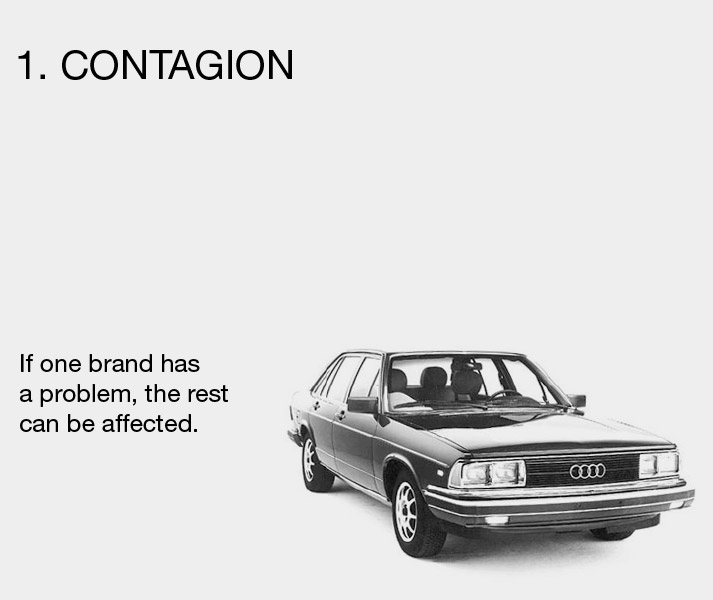
CONTAGION is the dark side of synergy. Just as customer loyalty can spread quickly through brand linkages, so can bad news. If one brand has a problem, the rest of the portfolio can become infected too. For example, a number of years ago, 60 MINUTES aired a story on the Audi 5000’s tendency toward “sudden acceleration,” an untrue claim that spread like wildfire. It ruined the reputation of the 5000 and affected the reputation of ALL Audi models. It took years for Audi to restore luster to its brand.
By contrast, if the same fate were to befall Mini Cooper next year, its parent company BMW would suffer less damage. By building a separate brand for Mini, the company has built a firewall between the two brands.
Thus, the choice between building a brand portfolio or stand-alone brand involves the trade-off between synergy and safety.
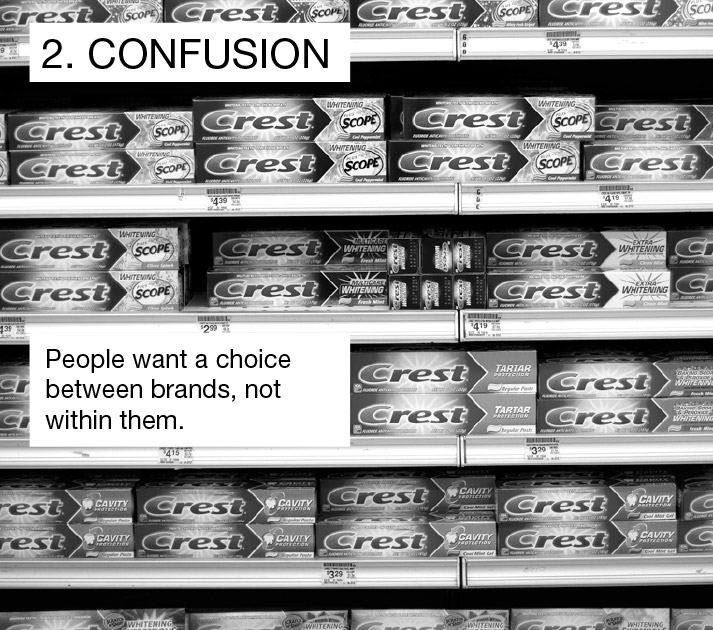
While CONFUSION isn’t as dramatic as contagion, it’s much more common. It happens when companies extend their brands past the boundaries their customers draw for them. A customer may love Crest toothpaste, but now that there are 17 varieties of Crest, it’s unclear what Crest means anymore. Rather than analyze their confusion, the customer may simply reach for Tom’s Natural—at least they know what it stands for. Customers want choice, but they want it AMONG brands, not WITHIN them.
Brand confusion can be avoided by understanding the trade-off between stickiness and stretchiness. Stickiness is a brand’s ability to own a distinct meaning in people’s minds. Stretchiness is its ability to extend its meaning without breaking. For example, Dyson is closely identified with expensive, brightly colored, high-design vacuum cleaners. The brand has a high degree of stickiness in its category. If Dyson were to add a line of expensive, brightly colored, high-design wristwatches, however, the brand could eventually forfeit its position in vacuum cleaners. It would be equally dangerous if Dyson decided to stay with vacuum cleaners but market an inexpensive version alongside its original high-end version. The company could find its brand defined by the low end, not the high end; the high end would then be vulnerable to a more focused competitor.
The temptation to stretch is nearly irresistible. Companies need to grow, and in the short term, most brand extensions make money. In the long term, however, extensions can confuse customers and create a doom loop: 1) the company needs revenue growth, 2) so it adds brand extensions, 3) which increase revenues in the short term, 4) but un-focus the brand in the long term, 5) which leads to decreased revenues, 6) which leads to a need for revenue growth…and around and down it goes. The way to avoid the brand-extension doom loop is to focus, align, and think long-term.
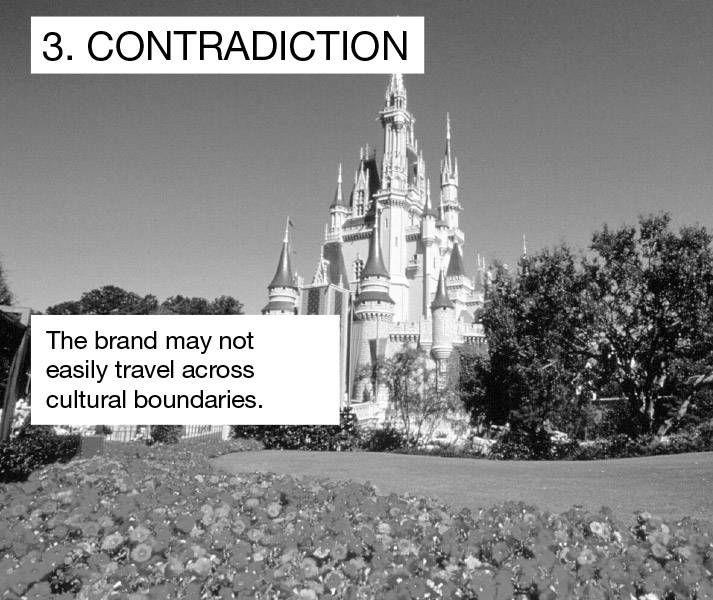
CONTRADICTION can occur when a company tries to extend a brand globally. Because brands are defined by customers, not companies, customers in one culture may have a different view of a product or company than customers in another culture. The Disney brand, for example, may signify “wholesome entertainment” in one culture, “American entertainment” in another culture, and “cultural imperialism” in yet another. By extending its brand portfolio geographically, Disney risks cultural backlash from contradictory meanings.
One way to avoid contradiction is to build a separate brand for each culture, with a different name and a different set of associations for each discrete entity. Another way is to focus a global brand on a common denominator. Hewlett-Packard’s “Invent” position allowed it to travel easily around the world without contradiction or cultural backlash.
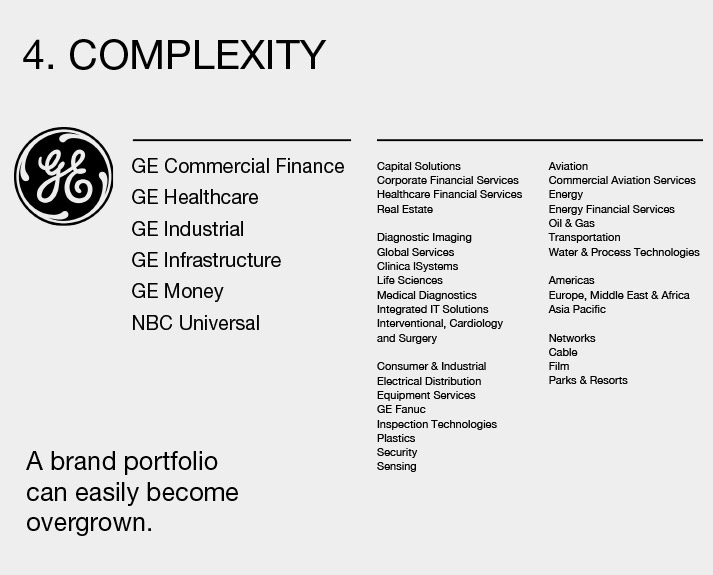
The last danger is COMPLEXITY. As a brand portfolio grows, what began as a way to simplify the brand-building process often ends up complicating it. Multiple segments, multiple products, multiple extensions, different competitive sets, and complex distribution channels can easily create an overgrown, hard-to-manage, inefficient brand portfolio. While the human mind is better at addition than subtraction, subtraction is the key to building strong portfolios—pruning back brands and subbrands that don’t support your zag.
Managing a portfolio requires establishing clear roles, relationships, and boundaries for brands. It requires the sacrifice of lucrative revenue streams that unfocus the portfolio. And it requires a strong sense of what customers will allow the brand to be. “As provocative as it sounds,” said CEO Helmut Panke of BMW, “the biggest task in brand-building is being able to say ‘no.’”

